The National Himalayan Expedition 2006
The Malana - Kiksa - Yankar Pass Trek
11th May to 22nd May 2006
The camp is located on a pict
 uresque clearing of the pine forest bang next to the gurgling Parvati River. The shining snow peaks are standing across presiding over the pristine glory. The tiny little tents (as they appeared from the road-side) added colour to the picture perfect. It was 10.30 a.m. As we climbed down from the road in to the camp site, mesmerized, we were brought out of our reverie by a pleasant, yet firm voice – “Welcome to the Youth Hostel Kasol”. I moved towards the tent from where Ms Rao, the camp leader greeted us. “No shoes Please” she said and left no one in doubt as to who is in command.
uresque clearing of the pine forest bang next to the gurgling Parvati River. The shining snow peaks are standing across presiding over the pristine glory. The tiny little tents (as they appeared from the road-side) added colour to the picture perfect. It was 10.30 a.m. As we climbed down from the road in to the camp site, mesmerized, we were brought out of our reverie by a pleasant, yet firm voice – “Welcome to the Youth Hostel Kasol”. I moved towards the tent from where Ms Rao, the camp leader greeted us. “No shoes Please” she said and left no one in doubt as to who is in command.We were given the forms to fulfill the entry formalities which contained our personal details. Forms filled up, I counted the number of forms that we filled up – 10 in all. Ages varying from 45 yrs to 8 yrs! What is a 45-yr old doing in a youth hostel? I wondered and told myself quickly that it is all in the heart and anyway, I am doing this for my children who badly wanted a good holiday. We needed to convince the organizers about the fitness of my 8-year old nephew. The rules are strict and they needed an undertaking from us that we are responsible for his safety.
We were allotted Tent No 10 for men and Tent 4 for women. Each tent had been pitched on leveled ground, with tarpaulin and a couple of rugs acting as the flooring. The tents are all khaki in colour with a double flap. Each tent would accommodate 6 to 8 persons who sleep on the ground with the sleeping bags provided by the camp. There are common bathrooms and toilets at one corner of the camp site. The toilets are very very basic and hot water is a luxury that can be ill-afforded. Frugal living is the password of the place. The entire campsite resembles the scout camp in every respect.
The trek is the National Himalayan Expedition to the Malana – Kiksar – Yankar pass which passes through 12,500 Yankar pass, which is another name for the famous Chandrakani Pass. The trek is for a total of 10 days, of which the first 3 days is meant for acclimatizing and conditioning at Kasol, which is 35 KM from Kullu, with a driving time of about 2 and ½ hours. The trek is organized meticulously with one group leaving Kasol for the trek everyday morning; and another group (which left 8 days before) returning in the evening. The campsite is agog with the trekkers who returned from the trek and the trekkers who are getting conditioned at Kasol. Animated queries and spirited replies.
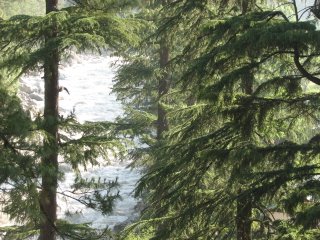 The systems at the youth hostel are clear and unambiguous- irrespective of the relationship, males and females live in separate tents; each one cleans his own tent and the camp site; washes own clothes. The systems for food are also very clear. Food is served hot and clean at the camp site in a pandal – each participant carries his own plate; stands in a ‘Q’ for lunch/dinner; and alter wash their plates themselves. The wakeup time is 5 a.m. after which tea is served and everyone assembles in the ground for the morning Physical Training. The PT includes jog for 2 kms followed by physical exercises and a jog back to the camp site, just in time to send off the batch that leaves for the ‘real’ trek.
The systems at the youth hostel are clear and unambiguous- irrespective of the relationship, males and females live in separate tents; each one cleans his own tent and the camp site; washes own clothes. The systems for food are also very clear. Food is served hot and clean at the camp site in a pandal – each participant carries his own plate; stands in a ‘Q’ for lunch/dinner; and alter wash their plates themselves. The wakeup time is 5 a.m. after which tea is served and everyone assembles in the ground for the morning Physical Training. The PT includes jog for 2 kms followed by physical exercises and a jog back to the camp site, just in time to send off the batch that leaves for the ‘real’ trek.Unaware of this rigorous discipline and the obstinate frugality, we found ourselves a bit out of place. None of the kids ever slept on the ground with s sleeping bag; or washed their own clothes or dishes; or used a public toilet for ablutions. We got no plates for eating and had to borrow the plates from the kitchen who obliged us saying ‘OK, just for this time’. ‘I had it!’, I thought - thinking of the shouting and cribbing that my wife and kids would come up with. ‘You should have checked all details before putting us through this’, I thought my wife (Pushpa) would say. I was all braced up to take the offensive and the brickbats from the kids, wife ably supported by her sister (Gita).
But there were none.
Kids said ‘they are loving it’ – as though they just came out of Mc Donald. The Wife spoke with surprising calm – unlike her usual castigating voice shrill with irritation. Certainly there is some thing special to this camp. May be the cool weather, the gentle breeze, the music of the river next to the campsite – all should have contributed to the elevated moods. The Parvati river is no clear and the water so clean that we could not but stray on to the river side. ‘No’, crackled the voice behind. No one is allowed to the river side, since the water flow is very rapid and the participants, mostly young, are at grave risk.
We settled down for cleaning the tent, by which time, it was a bell for lunch. Hungry, we found the hot food – consisting of dry chapattis, vegetable and Dhal – quite tasty. The mandatory siesta was spoilt by the house flies which made their way into the tent. We spent more time chasing them away than to catch a wink. Evening is for making purchases in the nearby Manikaran.
Manikaran is the place where there are the famous sulphur springs that join the river Parvati. The entire areas is occupied by a Sikh Gurudwara. We crossed the river and entered the Gurudwara and through that to the sulphur springs. The place was wet and dirty. The water from the sulphur springs is directed in to two ponds. Since the water is running, despite hundreds of people bathing, it appeared clean. As some of us were hesitating to get into the water with scanty clothing, others (myself including) did not want to waste time (since anyway there seemed to be no way of having bath in the freezing waters at the campsite), and jumped into the pond. It was a blissful experience! The water must be around 75 degrees Centigrade and it was very comforting, although the fumes of sulphur a bit nauseous. We had pull ourselves out thinking of the responsibility to make purchases that would support our frugal living at the campsite. The market is much cheaper than that of at Kasol and there are shops that specialize in the merchandise needed by the YHAI trek. The bus ride of about 6 kms would take not less than 25 minutes due to condition of the road, which is made more difficult since it is a single carriage way.
Back in the campsite, we waited for the arrival of the group number YP-13 from their trek. The entire camp lines up and gives the group at heroic welcome, clapping and shaking hands. The YP-3 recounted their experiences, and gave lot of confidence to the YP 16, 17 & 18 who are in the camp. The dinner was followed by the camp fire. There is no fire, since it is against the policy of youth hostels to burn wood (although we found that most of the cooking was being done using firewood). There is a show of talent by youngsters who sang, told jokes and danced - much to the glee of the other participants. There was official sharing of experiences, distribution of certificates and a hot chocolate to put us to sleep by 10 p.m.
2nd day
The day broke with the shrill whistle at 5 a.m. followed by bed tea and a strict notice that everyone is expected at the camp grounds by 6 a.m. We disengaged ourselves from our sleeping bags with reluctance and rushed to the toilet with a determination not to crib about the smells around. The morning PT was extremely refreshing as the trainer Mr. Panday taught simple but effective exercises to make the limbs supple. All of it was needed for the ordeal ahead of us.
Morning 9.30 was the start of the acclimatization trek up the hill abutting the campsite. The walk was through the village Kasol and as we marched past the picturesque school (at least 60 year old) made with wood and the thick forest of pines, the cool mountain air gave us company. The climb was steep and Pushpa and Gita were having a tough time. We needed to muster all the motivational skills gained through 20 years of service in IAS to ensure that they did not give up. We climbed about 800 feet and rested on the top of a mountain. The view from there was phenomenal – the river was appearing pencil-thin; and the scene was overtaken by the tall trees which threw a veil over the scenery of a row of snow capped mountains so majestic. We were served cool drinks (no fizz, it is against the discipline). We then climbed back but were not allowed to go to the camp till 12. 30 p.m. since the camp staff would need time to clean it up.
The afternoon saw the same old fight between the sleep and the house flies. Evening was another visit to Manikaran to buy stuff that we forgot like the snow goggles. The night camp fire was hosted by our group. Our group was consisting of 11 young boys from Mumbai led by a Pastor, the 10 of us and 10 others from Gujarat and Maharashtra. The pastor Rajesh was the MC for the camp fire, which saw a lot of singing and music from everyone. All our kids were in the forefront singing to the best of their abilities. This I find is the main advantage in children going for the trek. They learn and grow at a rapid pace.
3rd day
We get accustomed to the morning activities. Today was the training on rock-climbing and rappelling. We move via Kasol with our instructor Panday to the upstream of Parvati river along let bank of the river. We crossed thick forest growth and cross tricky paths till we reached a vertical stone of about 100 feet height. We were taught the trick of rappelling – which is climbing down the steep rock slopes with the aid of a rope. The task though appeared difficult was accomplished by the entire group, excepting of course Pushpa and Gita. The activity finished by 12 noon and we had spare time before going to the camp (No entry before 12. 30 p.m.)
Afternoon was the rock climbing at the same spot. Both these activities could have been combined in the morning visit itself. Anyway, rock climbing needed perfect body balance and ability to pull oneself up the tiny crevices on the rock. There is no support of rope at all. This makes it a bit dangerous and only a few could complete the task. But it was a good introduction to the difficulties posed by the mountaineering.
Evening was the pack up time. We had to pack our belongings for the trek. The weight was to be as low as possible since each one has to carry his own rucksack during the trek. The packing process required careful weighing of options, so that unimportant items are left behind without forgetting any essentials. It was a busy time through the evening to complete packing and leaving the surplus baggage with the YHAI. Once the luggage is packed and surplus deposited with YHAI, there is no way of accessing it back till we return from the trek.
We had a briefing with the Filed Director Mr. Pratap, who had briefed the group in detail about the programme and the do’s and the don’ts. I was appointed as the Group leader. An environmental leader has also been nominated. The YP 18 group with 12 members has been added to the YP 17 taking the total trekkers to 34.
The setback had been the decision of Pushpa and Gita to drop out of the trek. This was a bolt from blue for all of us, though it was a wise decision considering their fitness and health. The trek ahead was not easy by any stretch of imagination.
4th day; 14th May 2006
The day broke with trepidation, expecting the 1st day’s trek to be the toughest. Morning 6 a.m. was the breakfast and at 6.30 a.m. we filed in with our luggage at the ground. All the cards of the participants were handed over the group leader and we were flagged off at 7.15 a.m. We waited for the bus to take us to Jhari, which was the starting point of the trek. The bus was an ordinary bus plying between Manikaran and Kullu carrying passengers. The bus was half-full when it stopped at the YHAI camp. Most of the trekkers had to climb on to the roof of the bus. We felt that YHAI could organize a private bus for transportation of the trekkers.
We got down at Jhari at the Malana hydro-electricity plant and started out trek by climbing the 1000 steps. Most of the trekkers were quite exhausted with the climb and the blazing hot sun did not add any comfort. This was followed by walk on tarred road till the Malana Dam. The first batch of the trekkers reached the Dam site at 10.30 a.m. and had to wait for the rest till 11.15 a.m. 4 women trekkers proved smarter by taking a hitch hike till the dam site. The guide Mr Om Prakash met us here.
This walk everyone felt, was quite avoidable since there is nothing adventurous about it and the actual trek is actually ahead of the Dam. The dam itself was a flurry of activity with construction going on at furious pace.
 The main trek started at 11.15 a.m. with the guide advising us to be careful since there was extensive blasting in the area by the project construction agency. The trek was too steep at most places through thick forests, slippery paths at 45% slope. The trek followed the Malana Nala (actually a big river) for 1 km flanked on the other side by the forest cover. We encountered several waterfalls that gushed out pure water.
The main trek started at 11.15 a.m. with the guide advising us to be careful since there was extensive blasting in the area by the project construction agency. The trek was too steep at most places through thick forests, slippery paths at 45% slope. The trek followed the Malana Nala (actually a big river) for 1 km flanked on the other side by the forest cover. We encountered several waterfalls that gushed out pure water.The trek trail was disturbed by the road works which are underway to facilitate construction of Malana Dam II. At many places the loose boulders posed a lot of problem to the trekkers. By 12.30 p.m., most of the trekkers were tired, having negotiated nearly 7 km of thankless road. It was lunch halt then, at a spot which had 4-5 Dhabas. Everyone collapsed there with their lunch packs and relaxed till 1.30 p.m. Cool drinks and tea from the dhabas were on great demand.
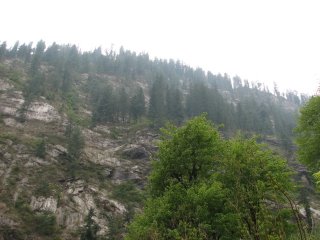 The post-lunch walk started at 1.30 p.m. and the first part was a plan walk for about ½ km. that was only the starting. It was followed by 2 km of strenuous climb. The path never seemed to be ending as it meandered along the unforgiving mountains. As we spotted the first hut, we all shouted YOGSO (the night halt) and rushed on. But it was not to be. It was only a hut of Malana people. We asked the girl at the hut JUST HOW FAR AWAY IS YOGSO? We were greeted with silence. Later we came to know that she is from Malana and they do not talk to outsiders.
The post-lunch walk started at 1.30 p.m. and the first part was a plan walk for about ½ km. that was only the starting. It was followed by 2 km of strenuous climb. The path never seemed to be ending as it meandered along the unforgiving mountains. As we spotted the first hut, we all shouted YOGSO (the night halt) and rushed on. But it was not to be. It was only a hut of Malana people. We asked the girl at the hut JUST HOW FAR AWAY IS YOGSO? We were greeted with silence. Later we came to know that she is from Malana and they do not talk to outsiders.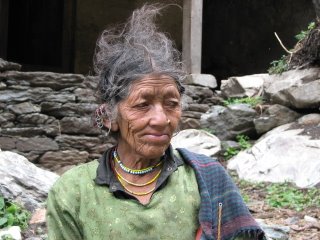 We saw a graceful old lady, with all the wisdom in the world on her face. She is from Malana too. So, she would not talk either. Maximum she was willing to concede is to allow us to photgraph her!
We saw a graceful old lady, with all the wisdom in the world on her face. She is from Malana too. So, she would not talk either. Maximum she was willing to concede is to allow us to photgraph her!We pressed on for the next one km and heard Sharan and Sanjay who reached first yelling that ‘here it is’. Yes it was. We all went screaming in. It was 3.15 p.m. And the camp leader did not expect us so early, as all other groups made it only after 5.30 pm.
The Yogso camp has been formed only this year.
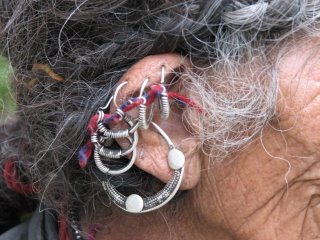 Although the location is among the thick forests, there is no habitation nearby. The water source is mainly used by the marauding sheep herds. The location of the camp gave claustrophobic feeling to most trekkers. Tall mountains covered the camp on all the 4 sides. The place were the tents were pitched was uneven and sharp stones were poking from the ‘floor’ as we tried to rest.
Although the location is among the thick forests, there is no habitation nearby. The water source is mainly used by the marauding sheep herds. The location of the camp gave claustrophobic feeling to most trekkers. Tall mountains covered the camp on all the 4 sides. The place were the tents were pitched was uneven and sharp stones were poking from the ‘floor’ as we tried to rest.There were only 2 tents for the Gents and 1 tent for the ladies. There are 26 gents in the group and they had to adjust @ 13 members per tent. The tents were full of house flies and they did not let the trekkers rest after a strenuous trek. The ‘toilets’ were open areas around the campsite. They were wrongly located high above the campsite. There was a lot of cribbing by the trekkers on the inadequate facilities. Actually, the place was not suitable for the campsite.
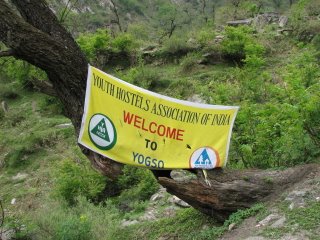 The Camp leader Mr. Chandra Prakash was a man with one hand, but managed the affairs calmly. The evening saw the familiar camp ‘fire’. This time, the songs got better, with the guitar carrying ‘Boy Band’ getting into action. Benjamin, Chris sang melodious songs as the group rocked. The dinner was hot and good. The spirit of the groups was high considering that all of them had made it in record time despite the difficulties of the first day.
The Camp leader Mr. Chandra Prakash was a man with one hand, but managed the affairs calmly. The evening saw the familiar camp ‘fire’. This time, the songs got better, with the guitar carrying ‘Boy Band’ getting into action. Benjamin, Chris sang melodious songs as the group rocked. The dinner was hot and good. The spirit of the groups was high considering that all of them had made it in record time despite the difficulties of the first day.


0 Comments:
Post a Comment
Subscribe to Post Comments [Atom]
<< Home